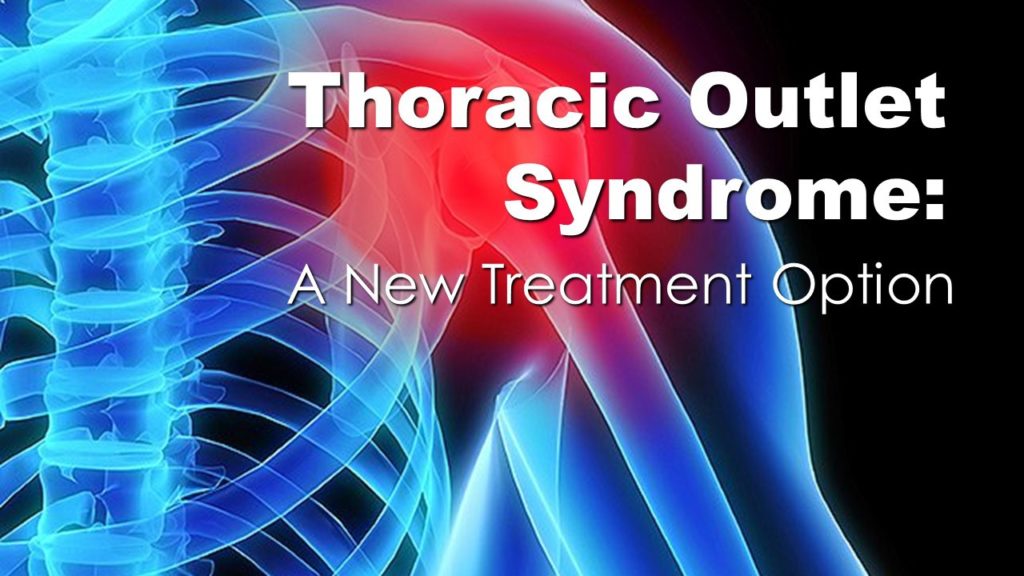
Together with BIDMC specialists from Neurophysiology, Diagnostic Radiology, and Pain Center additional diagnostic studies are obtained such duplex ultrasound examination, MRI, nerve conduction studies, and targeted injections with local anesthetics. It is diagnosed through careful history taking and examination of the patient. TOS is more common in women than in men and usually starts between 20 and 50 years of age. Finally, there is the possibility of compression of more than one structure at a time leading to overlapping symptoms. Compression of an artery can lead to pain or coolness of the hand. If a vein is compressed, it may also cause swelling or pain. It can feel like burning, tingling, numbness, or even weakness as well as pain along the arm, hand, and fingers if nerve compression is present. If the nerves are affected, you may require a neurologist.Thoracic Outlet Syndrome is caused by compression between the neck and shoulder muscles and between the first rib and collarbone. A thoracic surgeon, an expert in the chest, may also be required. If arteries and veins are affected, a vascular surgeon is the trained specialist who can surgically treat TOS. 08-07-2020 30-03-2023Įdited by: Carlota Pano What is thoracic outlet syndrome (TOS)?

If the nerves are affected, you may require a neurologist. Which type of specialist treats thoracic outlet syndrome? If surgery is necessary, you’ll be advised to avoid heavy lifting for some time, and may receive physiotherapy. Thoracic outlet syndrome (TOS) refers to the compression of one or more of the neurovascular structures traversing the superior aperture of the chest.1. For example, thrombolytic medication to dissolve blood clots, and anticoagulants (also known as blood thinners) which prevent clots).Īrterial (aTOS) from subclavian artery compression: Venous (vTOS) from subclavian vein compression:

Medical tests to diagnose thoracic outlet syndrome
THORACIC OUTLET SYNDROME SKIN
Cyanosis (a bluish or purplish skin discolouration).Symptoms of venous (vTOS) from subclavian vein compression may include: Wasting away of the hand muscles (atrophy).Symptoms of neurogenic (nTOS) from brachial plexus compression may include: They can also vary between individuals and be intermittent. Symptoms can vary depending on the type of TOS. If left untreated, certain types of TOS can cause serious blood clots, nerve damage, permanent arm swelling and pain, as well as gangrene from loss of blood flow. The subclavian arteries are two major arteries in the thorax that lie beneath each clavicle (collarbone).

Arterial (aTOS) from subclavian artery compression.The subclavian vein is one of the deep veins in your neck. Venous (vTOS) from subclavian vein compression.The brachial plexus is a network of nerves that sends signals to your shoulder, arm and hand from the spinal cord Neurogenic (nTOS) from brachial plexus compression - the most common type of TOS.Thoracic outlet syndrome (TOS) is an umbrella term for conditions that involve the compression of neurovascular structures over the thoracic area, from the lower neck to the armpit.Įach type of TOS is referred to by the structure that is being predominantly affected: Thoracic outlet syndrome (TOS) What is thoracic outlet syndrome (TOS)?


 0 kommentar(er)
0 kommentar(er)
